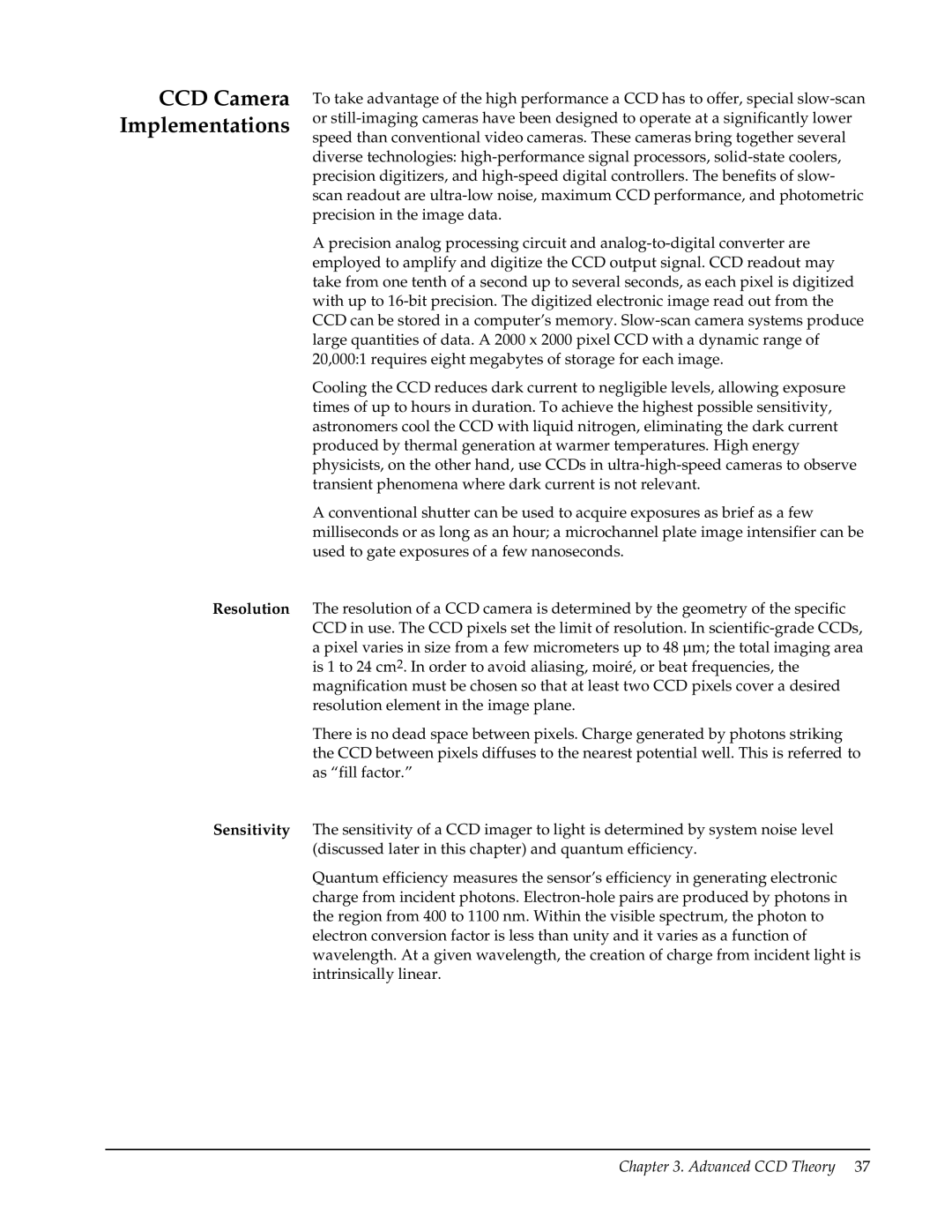To take advantage of the high performance a CCD has to offer, special slow-scan or still-imaging cameras have been designed to operate at a significantly lower speed than conventional video cameras. These cameras bring together several diverse technologies: high-performance signal processors, solid-state coolers, precision digitizers, and high-speed digital controllers. The benefits of slow- scan readout are ultra-low noise, maximum CCD performance, and photometric precision in the image data.
Aprecision analog processing circuit and analog-to-digital converter are employed to amplify and digitize the CCD output signal. CCD readout may take from one tenth of a second up to several seconds, as each pixel is digitized with up to 16-bit precision. The digitized electronic image read out from the CCD can be stored in a computer’s memory. Slow-scan camera systems produce large quantities of data. A 2000 x 2000 pixel CCD with a dynamic range of 20,000:1 requires eight megabytes of storage for each image.
Cooling the CCD reduces dark current to negligible levels, allowing exposure times of up to hours in duration. To achieve the highest possible sensitivity, astronomers cool the CCD with liquid nitrogen, eliminating the dark current produced by thermal generation at warmer temperatures. High energy physicists, on the other hand, use CCDs in ultra-high-speed cameras to observe transient phenomena where dark current is not relevant.
A conventional shutter can be used to acquire exposures as brief as a few milliseconds or as long as an hour; a microchannel plate image intensifier can be used to gate exposures of a few nanoseconds.
The resolution of a CCD camera is determined by the geometry of the specific CCD in use. The CCD pixels set the limit of resolution. In scientific-grade CCDs, a pixel varies in size from a few micrometers up to 48 µm; the total imaging area is 1 to 24 cm2. In order to avoid aliasing, moiré, or beat frequencies, the magnification must be chosen so that at least two CCD pixels cover a desired resolution element in the image plane.
There is no dead space between pixels. Charge generated by photons striking the CCD between pixels diffuses to the nearest potential well. This is referred to as “fill factor.”
The sensitivity of a CCD imager to light is determined by system noise level (discussed later in this chapter) and quantum efficiency.
Quantum efficiency measures the sensor’s efficiency in generating electronic charge from incident photons. Electron-hole pairs are produced by photons in the region from 400 to 1100 nm. Within the visible spectrum, the photon to electron conversion factor is less than unity and it varies as a function of wavelength. At a given wavelength, the creation of charge from incident light is intrinsically linear.
